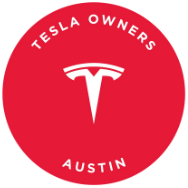The automotive industry is currently experiencing a significant shift due to the policies of the new Trump administration. The impact of these policies on the global automotive market, particularly the second-largest in the world, is a topic of much discussion. Questions arise about the implications of new auto tariffs, the future of the electric vehicle market, and the potential conflict with California’s stringent emissions regulations.
The Trump administration’s focus on imposing more tariffs and rolling back policies that support the growth of electric vehicles has created uncertainty in the industry. California, a key player in setting clean air and climate standards, faces a challenge as the administration aims to overturn regulations that would ban the sale of new internal combustion cars by 2035. This move could have far-reaching consequences, as many other states have adopted California’s stricter rules as well.
The decision to challenge California’s authority over emissions standards reflects a broader effort to undermine environmental regulations and promote traditional gas-powered vehicles. However, critics argue that such actions could hinder the development of electric vehicles and delay the transition to cleaner transportation options. The auto industry’s stance on the matter remains divided, with some calling for certainty in regulations to guide their future investments.
Meanwhile, Tesla, a leading player in the electric vehicle market, has seen a recent decline in its stock price. High-profile figures on Tesla’s board, including Chairwoman Robyn Denholm and CEO Elon Musk’s brother, Kimbal Musk, have sold significant amounts of stock in recent weeks. This trend has raised concerns about the company’s future performance and the impact of Musk’s involvement in government activities on Tesla’s sales.
Additionally, the planned merger between Honda and Nissan, valued at $60 billion, has been called off, leaving Nissan in search of a new partner. The breakdown of the merger negotiations highlighted a difference in vision between the two companies, with Honda asserting its dominance in the proposed integration. The revelation that the merged company would have been named “Honda Corporation” underscores the unequal nature of the deal.
Looking ahead, the timeline for a total ban on new gas cars remains uncertain. While California aims to phase out internal combustion vehicles by 2035, the feasibility of such a target is subject to debate. Factors such as advancements in battery technology and market forces will play a crucial role in determining the pace of the transition to electric vehicles. Norway’s successful transition to electric vehicles provides a promising example, but the path forward for other markets like the U.S. and Germany remains unclear.
In conclusion, the automotive industry is facing a period of significant change and uncertainty, driven by shifting policies and evolving market dynamics. The decisions made in the coming years will shape the future of transportation and determine the industry’s direction for years to come.

